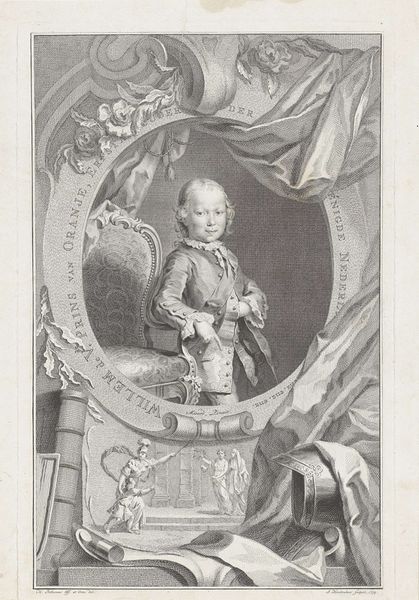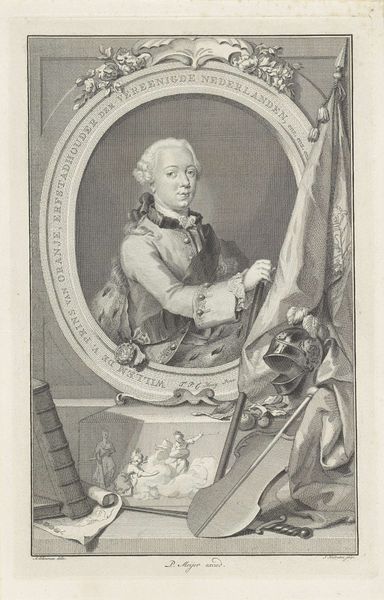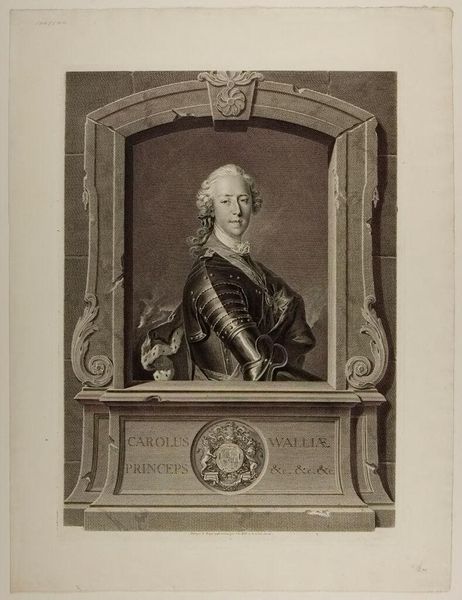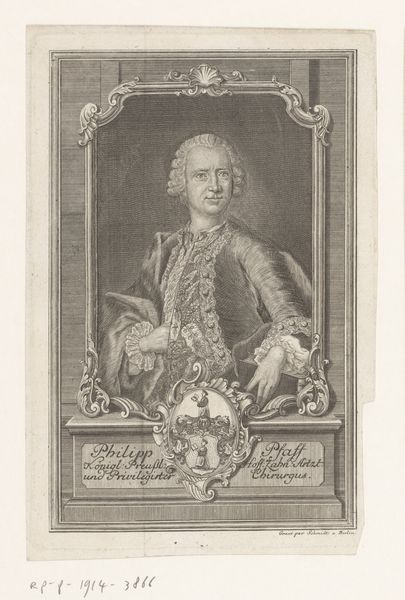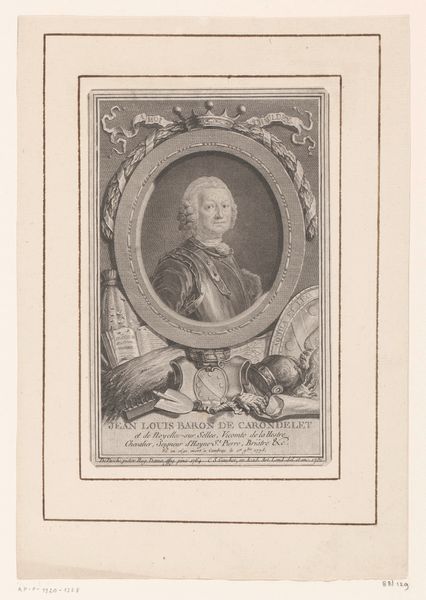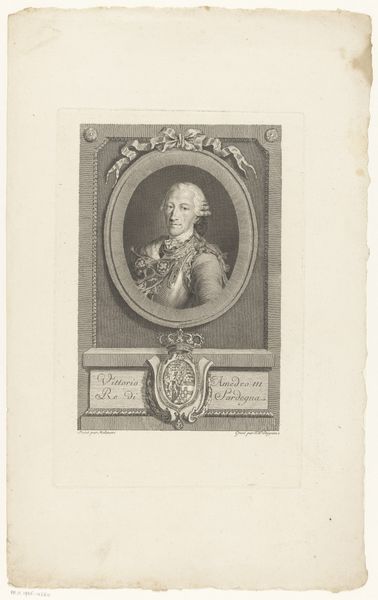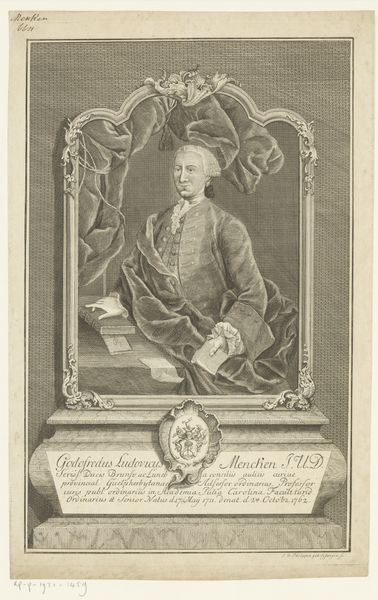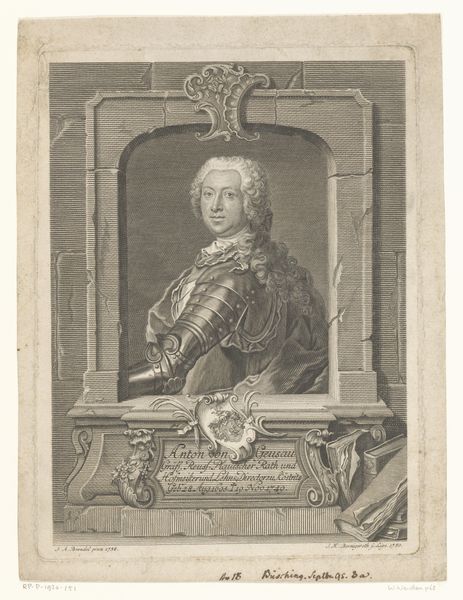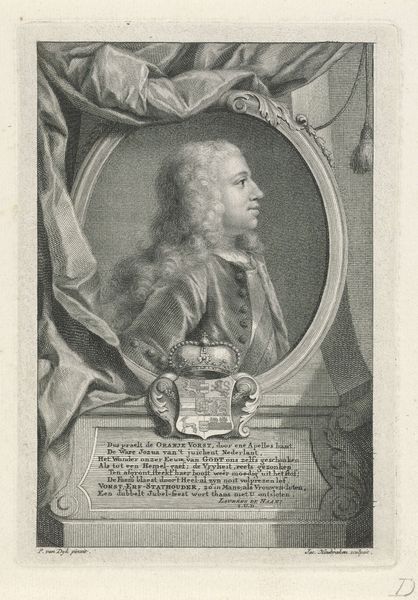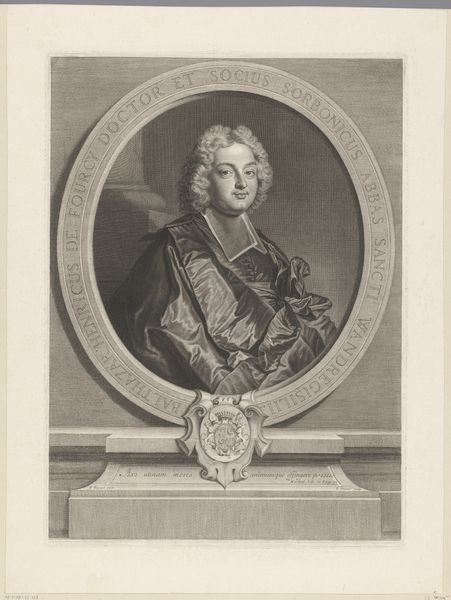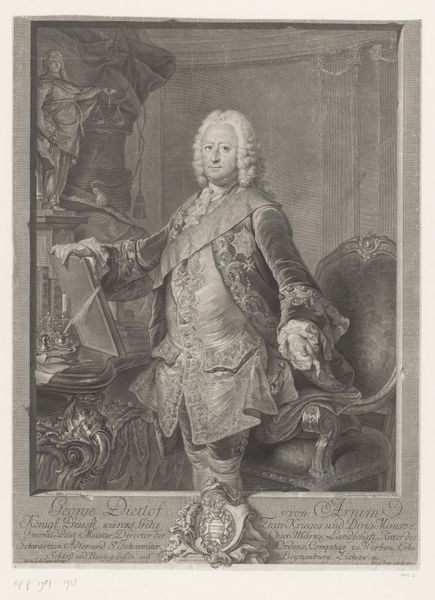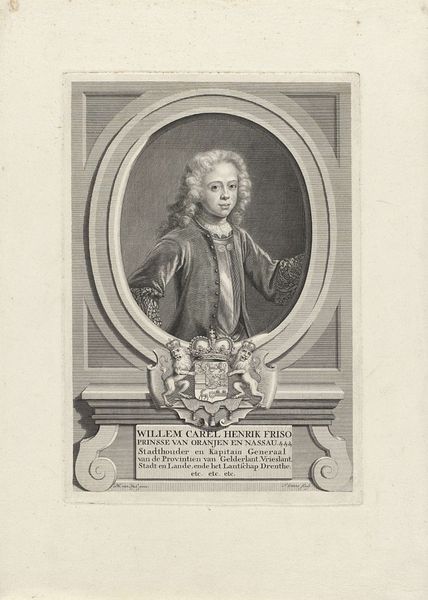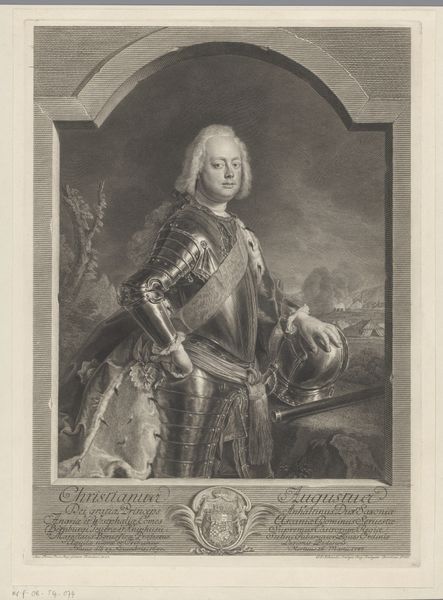
Dimensions: height 435 mm, width 350 mm
Copyright: Rijks Museum: Open Domain
Curator: I’m drawn in by this detailed print, “Portret van Willem V, prins van Oranje-Nassau,” attributed to Antoine P. Duboulois and dating roughly from 1765 to 1771. What’s your first impression? Editor: Stark! There's an imposing formality about this, all that ornate detail hemming in the poor Prince. Like looking at him through a window, only the window's made of expectations and societal pressure. Does he look a bit trapped to you? Curator: That sensation speaks volumes about the public role of imagery at the time. Consider how meticulously the portrait constructs his authority. The rigid frame, the carefully rendered coat of arms… It's about projecting power, cementing his place in the political landscape, really. Editor: Yes, all that regalia – you almost forget there’s a human being under it all. He is so young! What are the optics? All this weight on one person! Curator: The Dutch Republic had its share of political turbulence. This print circulated widely; a piece of propaganda aimed to bolster public faith in leadership amidst those unsettling times. The text inscribed is all about hoping for this prince! Editor: It is all a little sad when I put it that way. You can feel the urgency behind that idealized depiction. Perhaps the Baroque style and academic polish serve less as decoration and more as...reinforcement. As you say, a political campaign of a certain era, to make an icon out of flesh and blood! Curator: Absolutely, Duboulois understands that. This print wasn't just art; it was an instrument of governance, shaping opinion and managing perceptions within the intricate power dynamics of the 18th century. Editor: So, not just a portrait, but a political object lesson? A paper promise made flesh? It makes me see the face differently, somehow. Curator: Exactly! And for me, considering that institutional power gives it another interesting shade: of being both a likeness, and the weight of the Crown on that individual.
Comments
No comments
Be the first to comment and join the conversation on the ultimate creative platform.
